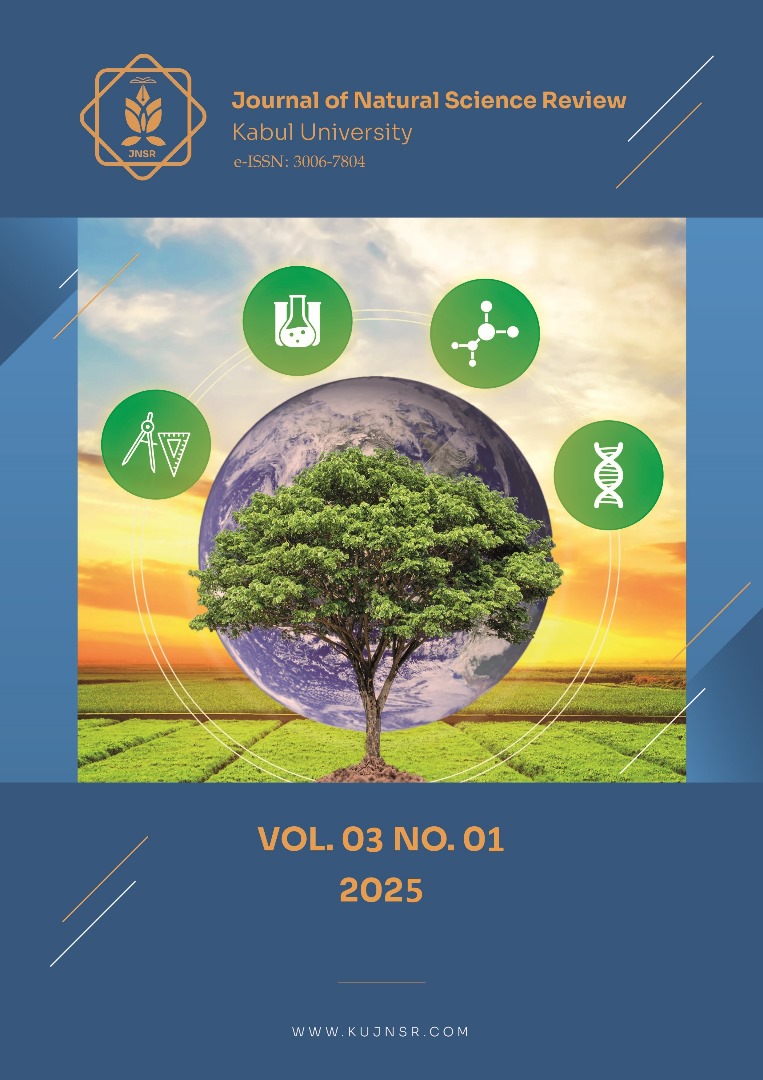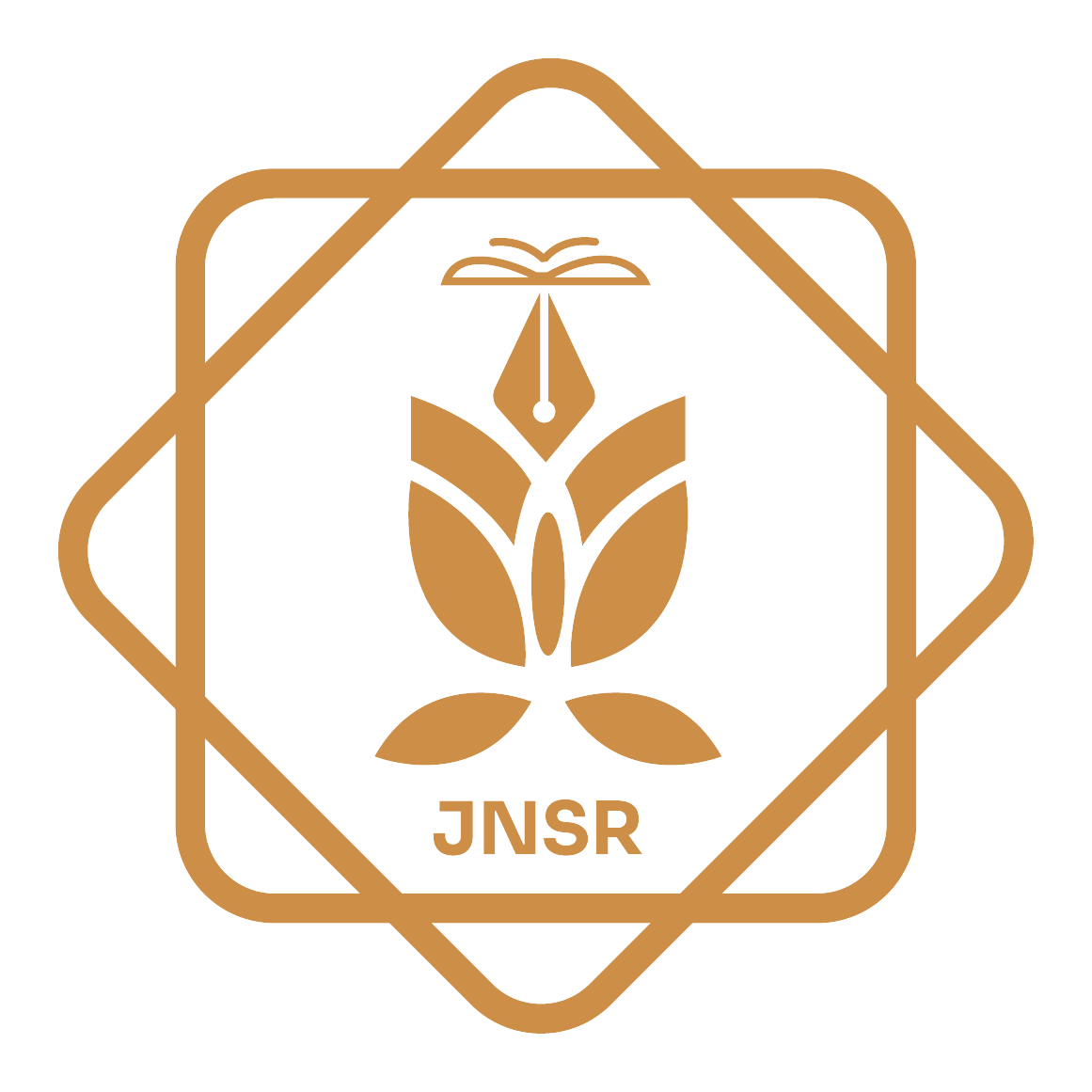The Impact of Russian Knapweed's Extracts on Open Wound Healing Process in Rabbits
DOI:
https://doi.org/10.62810/jnsr.v3i1.177Keywords:
Russian Knapweed, Extract, Wound, Healing, RabbitsAbstract
Skin is the body's outermost layer; therefore, it is more at risk and is injured by many factors such as surgery, illness, and burns. Numerous drugs are used to heal these wounds, each of which has several drawbacks, limitations, and side effects. So, it is important to prepare a substance that is accessible, cheap, without limitations and defects, with or without low side effects. Therefore, we decided to conduct a study to investigate the effects of extracts of Russian knapweed on open wound healing in rabbits. This research was conducted on 18 rabbits in the Faculty of Veterinary Sciences of Kabul University. Russian Knapweed root and stem extract were extracted using the decoction method. Then, a deep open wound was created in the animal's skin by a scalpel blade, and extracts were applied. The rabbits were randomly divided into the three (control, root, stem) groups. Results obtained from this research show that the vital signs of rabbits during the research were typical also on the fourth day; the root and stem groups had the highest healing rate, respectively. There is a significant difference compared to the control group, P < 0.05. On days 7th, 10th, and 13th, the stem group had the highest healing rate, but the difference between this group and the control and root groups was insignificant P˃0.05. Generally, the results of this study show that the Russian Knapweed root and stem extract obtained by the decoction method did not have a good effect on wound healing. However, on the fourth day of wound evaluation, more than 50% of wounds in root and stem groups were healed.
Downloads
References
Abubakar, A. R., & Haque, M. (2020). Preparation of medicinal plants: Basic extraction and fractionation procedures for experimental purposes. Journal of Pharmacy and Bioallied Sciences, 12(1), 1–10. https://doi.org/10.4103/jpbs.JPBS DOI: https://doi.org/10.4103/jpbs.JPBS_175_19
Ackermann, M. R., (2012). Zachary, J. F., McGavin, D. M.(ed.) In Pathologic basis of veterinary disease, (5th, ed). Elsevier, Penny Rudolph, ISBN: 978-0-323-07533-6, pp. 89-135.
Akhgari, Z., Tanomand, A., Nazari, R., & Zargar, M. (2022). Biological and antibacterial features of Acroptilon repens ( L .) DC. Crescent Journal of Medical and Biological Sciences, 9(2), 116–122. https://doi.org/10.34172/cjmb.2022.20 DOI: https://doi.org/10.34172/cjmb.2022.20
Allen, C., & Harper, V. (2011). Laboratory manual for anatomy and physiology (4th, ed). John Wiley & Sons, ISBN-13 978-0470-59890-0, United States of America, pp. 83-90.
Babaei-ghaghelestany, A., Taghi, M., & Farzaneh, S. M. M. (2022). The anticancer and antibacterial properties of aqueous and methanol extracts of weeds. Journal of Agriculture and Food Research, 10(2022), 100433. https://doi.org/10.1016/j.jafr.2022.100433 DOI: https://doi.org/10.1016/j.jafr.2022.100433
Callaway, R. M., & Schaffner, U. (2011). The impact of Acroptilon repens on co-occurring native plants is greater in the invader' s non-native range. Division of Biological Sciences, https://doi.org/10.1007/s10530-011-0145-1 DOI: https://doi.org/10.1007/s10530-011-0145-1
Dashti, A., Shokrzadeh, M., Karami, M., & Habibi, E. (2022). Phytochemical identification, acute and subchronic oral toxicity assessments of hydroalcoholic extract of Acroptilon repens in BALB / c mice : A toxicological and mechanistic study. Heliyon, 8(2022), 1–12. https://doi.org/10.1016/j.heliyon.2022.e08940 DOI: https://doi.org/10.1016/j.heliyon.2022.e08940
Davoodi, F., Raisi, A., Farjanikish, G., Abdollahzadeh, H., & Kamalpour, M. (2022). A Review on wound healing with Iranian medicinal plants and microbial flora in veterinary medicine. Iranian Journal of Veterinary Surgery, 17(2), 146–159. https://doi.org/doi.org/10.30500/IVSA.2022.345708.1304
El Sherbeni, S.A., Negm, W. A., (2023). The wound healing effect of botanicals and pure natural substances used in in vivo models. Inflammopharmacology, 31(2), 755–772. https://doi.org/10.1007/s10787-023-01157-5 DOI: https://doi.org/10.1007/s10787-023-01157-5
Fails, A.D.,. Magee, C., (2018). Anatomy and physiology of farm animals (8th, ed). Wiley‐Blackwell, ISBN 9781119239734, United States of America, pp. 273-276.
Gaskin, J. F., & Little, J. L. (2017). Invasive Russian Knapweed ( Acroptilon repens ) creates large patches almost entirely by Rhizomic growth. Invasive Plant Science and Management, 10, 119–124. https://doi.org/10.1017/inp.2017.9 DOI: https://doi.org/10.1017/inp.2017.9
Golam Rasul, M., (2018). Conventional extraction methods used in medicinal plants, their advantages and disadvantages. International Journal of Basic Sciences and Applied Computing, 2(6), 10–14.
Gou, J., Lu, Y., Xie, M., Tang, X., Chen, L., Zhao, J., Li, G., & Wang, H. (2023). Antimicrobial activity in Asterceae: The selected genera characterization and against multidrug resistance bacteria. Heliyon, 9(2023), 1–24. https://doi.org/10.1016/j.heliyon.2023.e14985 DOI: https://doi.org/10.1016/j.heliyon.2023.e14985
Koloren, O., Uygur, S., Bozdogan, O., Uygur, F. N., & Schaffner, U. (2008). Population density and reproductive output of Acroptilon repens L ., in turkey. Pak. J. Bot, 40(6), 2259–2263.
Mangold, J. M., Poulsen, C. L., Carpinelli, M. F., Mangold, J. M., Poulsen, C. L., & Carpinelli, M. F. (2007). Revegetating Russian Knapweed ( Acroptilon Repens ) infestations using morphologically diverse species and seedbed preparation revegetating, Rangeland Ecology & Management, 60(4), 378–385. https://doi.org/http://dx.doi.org/10.2111/1551-5028(2007)60[378:RRKARI]2.0.CO;2 DOI: https://doi.org/10.2111/1551-5028(2007)60[378:RRKARI]2.0.CO;2
Masson-meyers, D. S., Andrade, T. A. M., Caetano, G. F., Guimaraes, F. R., Leite, M. N., Leite, S. N., & Frade, M. A. C. (2020). Experimental models and methods for cutaneous wound healing assessment. International Journal of Experimental Pathology, 1–17. https://doi.org/10.1111/iep.12346 DOI: https://doi.org/10.1111/iep.12346
Mazhar, M. W., Ali, H., Saif, S., Raza, A., Kousar, S., Tahir, H., & Mazhar, F. (2022). Therapeutical medicine for wound healing. American Journal of Biomedical Science & Research, 15(4), 419–429. https://doi.org/10.34297/AJBSR.2022.15.002133 DOI: https://doi.org/10.34297/AJBSR.2022.15.002133
Mohan, H. (2015). Textbook of PATHOLOGY (7th ed.). Jaypee Brothers Medical Publishers (P) Ltd, New Delhi India, ISBN: 978-93-5152-369-7, pp. 116-163.
Nadaf, M., Asrabadi, M. N., Khalilabad, M. H., & Mohaddesi, B. (2013). Identification of non-polar chemical compounds Acroptilon repens growing in Iran by GC-MS. Middle-East Journal of Scientific Research, 17(5), 590–592. https://doi.org/10.5829/idosi.mejsr.2013.17.05.75149
Nasa, P., & Kumar, H. (2020). Plants Havings Wound Healing Property : A Review. 12(8), 1071–1075.
Quintana, N., Weir, T. L., Du, J., Broeckling, C. D., Rieder, J. P., Stermitz, F. R., Paschke, M. W., & Vivanco, J. M. (2008). Phytotoxic polyacetylenes from roots of Russian knapweed (Acroptilon repens (L.) DC.). Phytochemistry, 69(2008), 2572–2578. https://doi.org/10.1016/j.phytochem.2008.07.015 DOI: https://doi.org/10.1016/j.phytochem.2008.07.015
Scanlon, V.C., Sanders, T., (2007). Essentials of Anatomy and Physiology (5th, ed). F. A. Davis Company, United States of America, ISBN–10: 0-8036-1546-9, pp. 88-100.
Vegad, J. L. (2008). A textbook of veterinary general pathology(2th ed). International book distributing co, ISBN 978-81-8189-181-5, India, pp. 105-210.
Zaki, A., El-Bakry, H., & Fahmy, A. (2005). Effect of licorice on wound healing in rabbits. The Egyptian Journal of Hospital Medicine, 20, 58–65. DOI: https://doi.org/10.21608/ejhm.2005.18094
Downloads
Published
How to Cite
Issue
Section
License
Copyright (c) 2025 Ghulam Haidar Olfat, Emal Habibi , Mohammad Sangary , Amanullah Aziz , Said Ashraf Hashemi , Nick Mohammad Omari

This work is licensed under a Creative Commons Attribution-NonCommercial 4.0 International License.



























